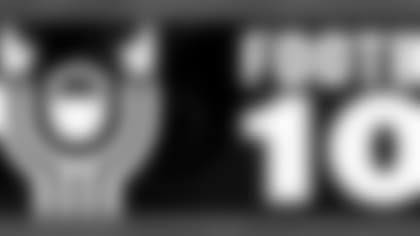In this feature, Football 101, NFL officials help explain and clarify some of the rules that impact the game. This week, umpire Tony Michalek, who is now in his 13th NFL season, details what constitutes as holding by an offensive player ...
Summary From The Official NFL Rule Book - Rule 12, Section 1, Article 2
"An offensive player is permitted to block an opponent by contacting him with his head, shoulders, hands, and/or outer surface of the forearm, or with any other part of his body that is not prohibited by another rule.
"A blocker may use his arms, or open or closed hands, to contact an opponent on or outside the opponent's frame (the body of an opponent below the neck that is presented to the blocker), provided that he does not materially restrict him. The blocker immediately must work to bring his hands inside the opponent's frame, and as the play develops, the blocker is permitted to work for and maintain his position against an opponent, provided that he does not illegally clip or illegally push from behind."
There are three instances when an offensive player is permitted to use his hands or arms to restrict an opponent:
- If the offensive player is a runner.
- During a loose ball that has touched the ground.
- During a kick.
The Official Point Of View
"Some key terms as holding goes are advantage and disadvantage. Is there advantage taken and is there disadvantage? Is there engagement and disengagement? A lot of holding doesn't occur until the disengagement," Michalek said. "If you talk about the outside-the-shoulders contact where the linemen are dancing, it's not a foul. It's ugly, technically, but if they're going to dance, it's not a foul. As soon as the disengagement happens, where you start to get your feet beat, now we've got a foul.
"'Feet are beat' is another term we go with. When I see a guy whose feet are beat, chances are he's going to cheat. That's an easy way to remember it. If I scan and look and see that a guy's beat, that's the guy I'm going to keep my eyes on.
"Material restriction, where it takes a step away - that's another thing I take a look at. If a player has got him not necessarily beat, but he takes a step away from a guy, that's a foul. That simplifies it a little bit, because the average fan knows what the rule reads, but they think you can never grab a jersey and make a legal block. That's not true. If so, you could call holding on every play, but that's not the parameter we're talking about."
Last week, back judge Tony Steratore detailed how the officials judge pass interference.















